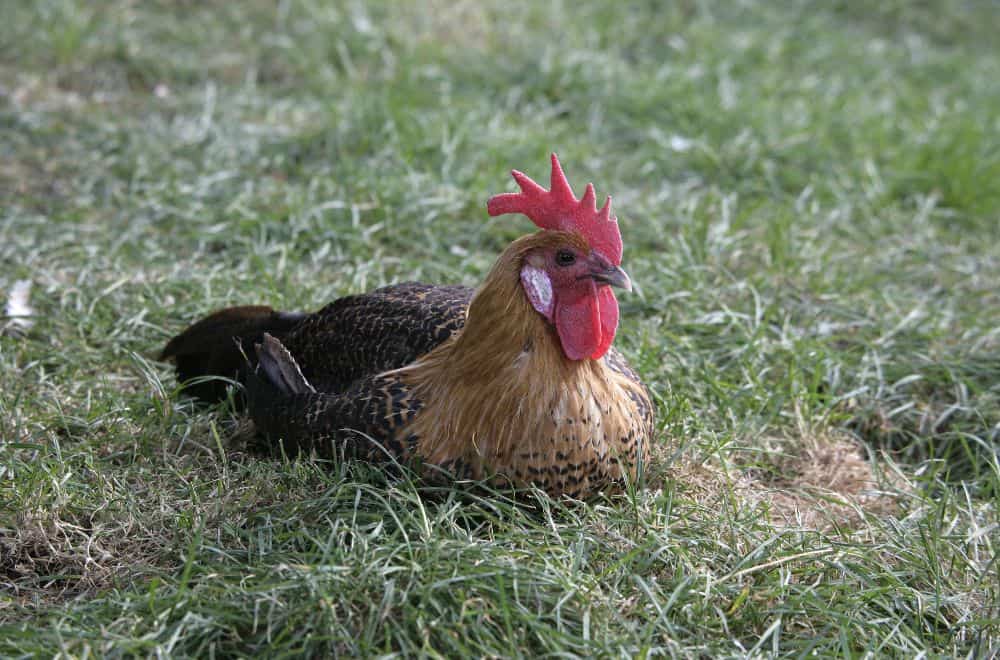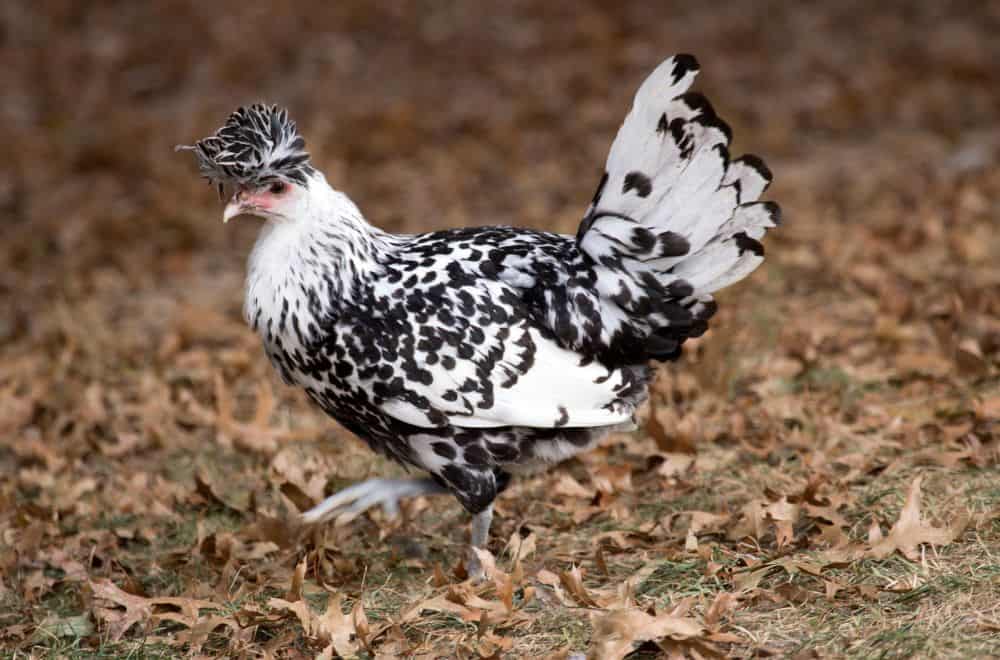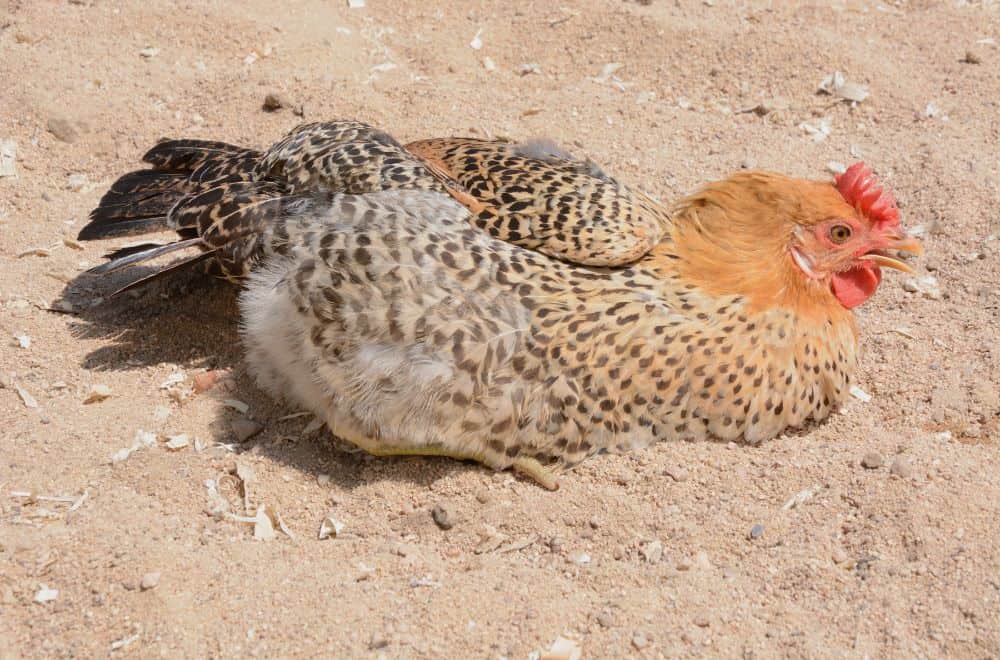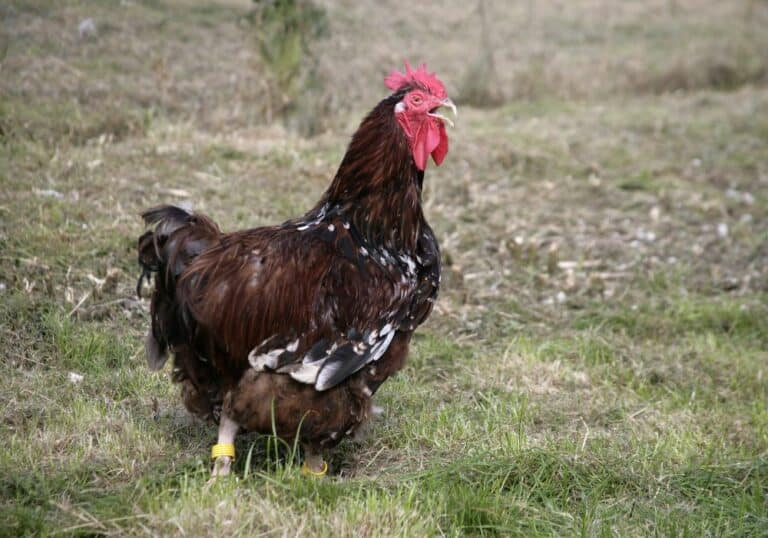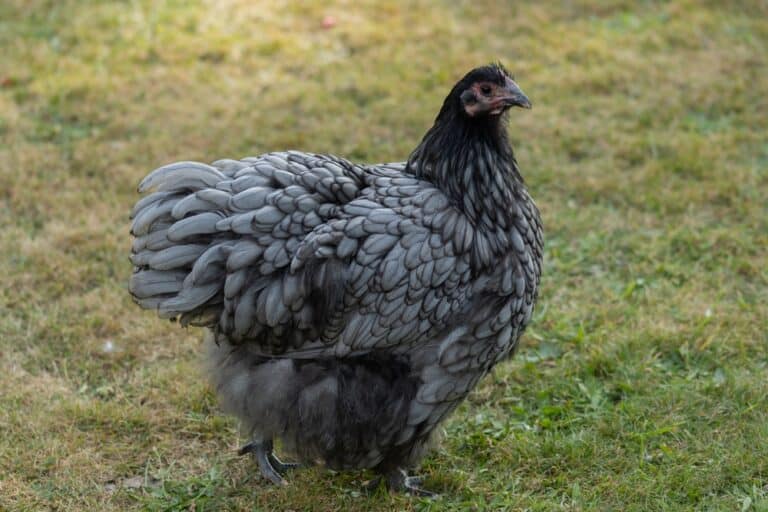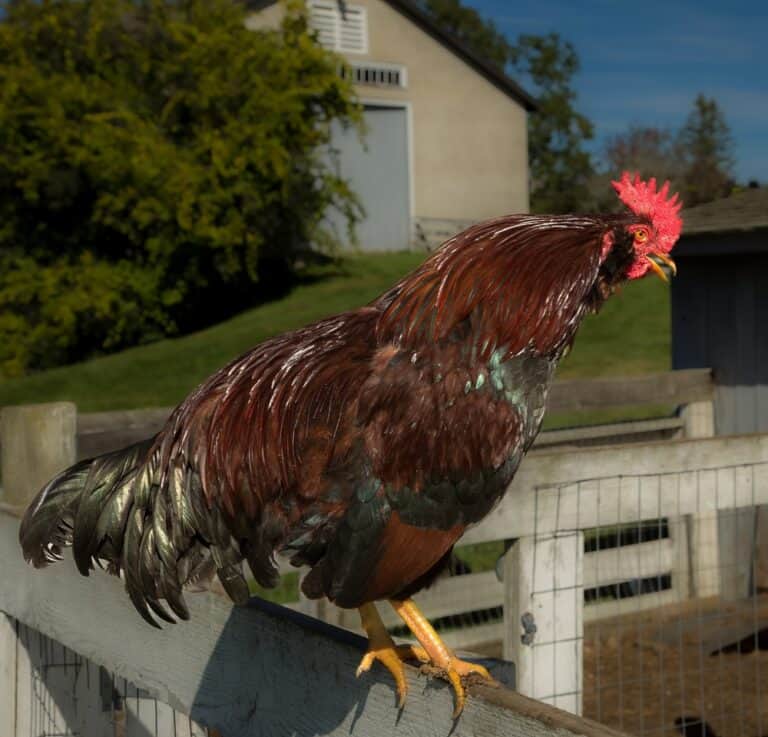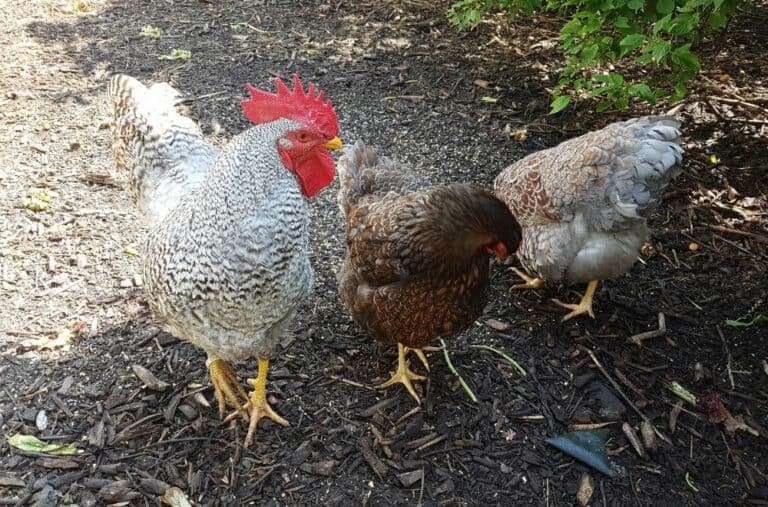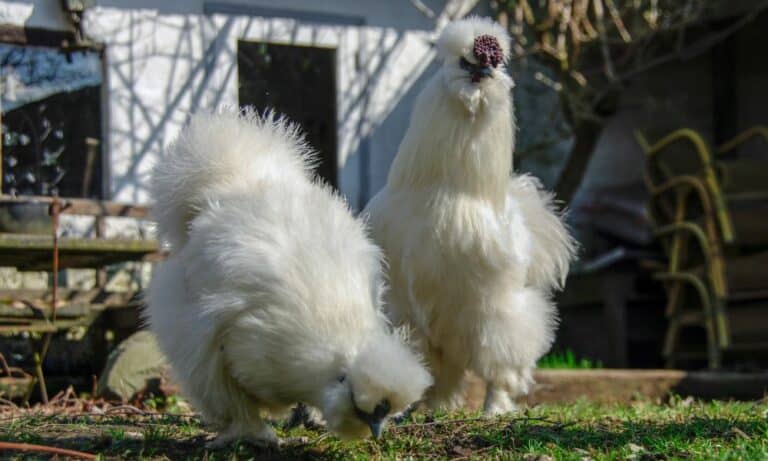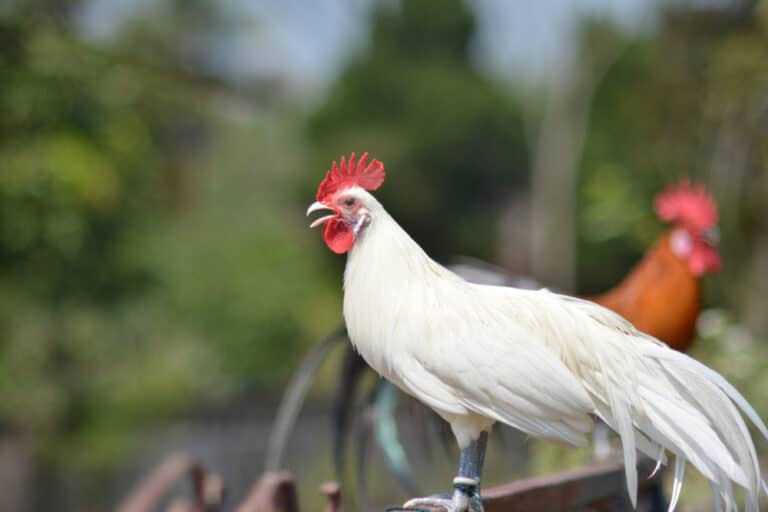Are you thinking about keeping chickens, but want a bird that’s a little unusual? Or perhaps you’re interested in the fascinating features and histories of rare breeds. Either way, you’ve come to the right place!
We’re going to look at rare chicken breeds from around the world. We’ll look at their appearance and characteristics. And we’ll discover what makes them different from other breeds.
Ready to learn more? Step this way!
Rare Chicken Breeds
1. Scots Dumpy
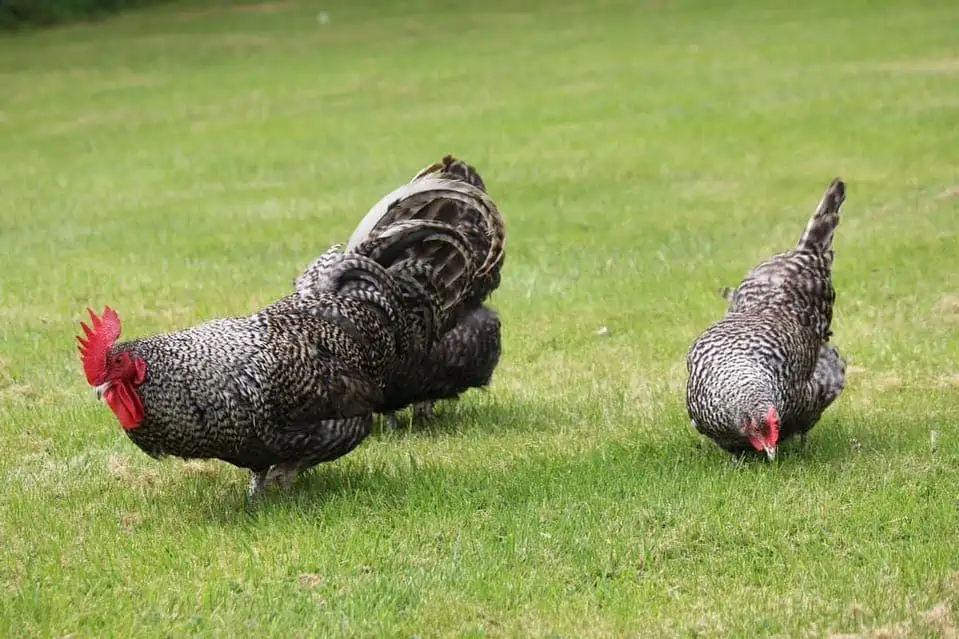
The Scots Dumpy is – you’ve guessed it – a Scottish breed of chicken. And its less than flattering name reflects its short stature. It’s a type of what’s known as a “creeper chicken”, a bird with abnormally short legs. Their shanks are no longer than 1.5 inches.
In other respects, they look much like other chickens. The breed comes in pretty much all chicken colors, and the birds have a single, bright red comb, medium-sized wattles, and small earlobes.
The hens are decent layers, producing around 180 cream or white colored eggs in a year. They’re good sitters too, and have been used to incubate the eggs of game birds.
Their history in Scotland is thought to date back at least two hundred years. They were brought to England some time around the middle of the nineteenth century. Records show them being displayed at a poultry exhibition in London in 1852.
Over time, the breed dwindled, and in 1975 a search across the whole of Scotland was unsuccessful in finding any Scots Dumpies.
But fortunately, a flock of the birds had been taken to Kenya in 1902, part of the dowry of a Scots bride. Some of the descendants of those birds were reintroduced to Scotland in 1977, allowing the breed to continue to this day.
2. Brabanter
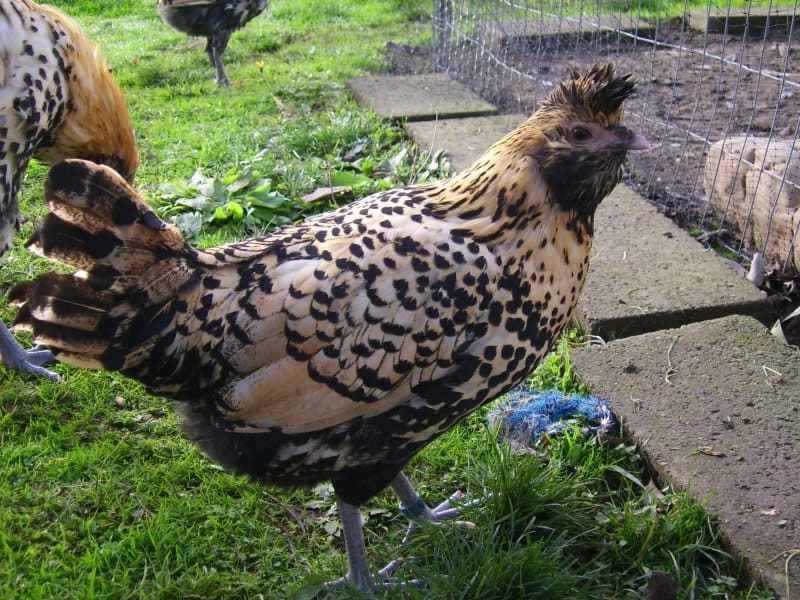
The Brabanter gets its name from the region from which it originates. Brabant lies between Belgium and the Netherlands, although the Brabanter is officially a Dutch breed.
It’s a crested chicken – an ornamental bird with a tall crest of feathers on its head. It dates back to at least the seventeenth century, appearing in a painting dated 1676. And Brabanters are recorded in a poultry show in Germany in 1854.
But by the 20th century, their numbers had decreased radically. After nearly becoming extinct, their fortunes were revived as a result of cross-breeding with other crested chickens.
Today’s Brabanter is a small and distinctive bird. Its narrow crest points forward, the comb is V-shaped, and not all birds have wattles.
Standard roosters weigh between 4.2 and 5.5 pounds, while male bantams are around 2 pounds. Standard hens range between 3.5 and 4.5 pounds, and female bantams between 1.5 and 1.75 pounds.
3. Campine
The Campine hails from the region of the same name in northern Belgium. It’s a descendent of the Braekel, a traditional Belgian breed. And it’s thought to date back to around the nineteenth century. Today, it’s among the rarest of all domestic chicken breeds.
It can be found in gold and silver colors, but in each case the head is a different color to the body. Gold birds have white heads, while silver have gold heads.
Standard roosters weigh around 6 pounds, while bantams are about 1.5 pounds. Standard hens are around 5 pounds, while the bantams are a delicate 1.25 pounds.
They’re inquisitive, active and flighty birds, and do well when left to roam free.
The hens are good egg layers, reliably producing plenty of large white eggs. Some strains will produce around 180 a year. They’re not so good at incubating them, though.
Today, the breed’s extreme rarity means that Campines are generally kept as show birds. And exhibition strains tend to be less prolific layers.
4. La Flèche
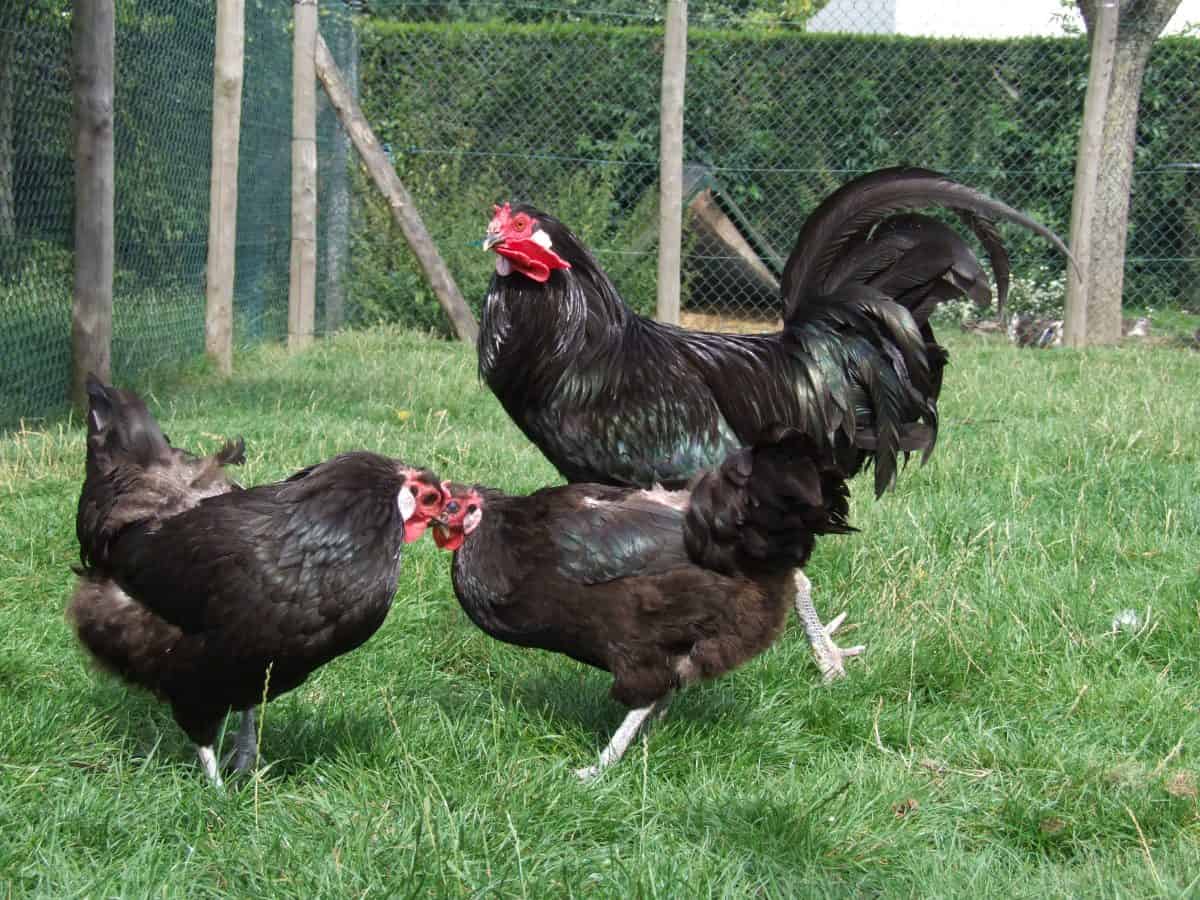
La Flèche is a town and commune in the Loire region of France. And it’s also the birthplace of the chicken breed which goes by the same name.
The La Flèche is believed to date back all the way to the fifteenth century. The breed was highly prized for its meat, but numbers fell dramatically after the Second World War. And by the 1970s, it was close to extinction.
Numbers have since gradually recovered, thanks to dedicated breeding programs. Nevertheless, this remains a rare breed.
All La Flèche chickens have black feathers. They also have white earlobes, slate gray shanks, large red wattles, and bright red eyes. Roosters weigh around 8 pounds, whilst hens are about 1.5 pounds lighter.
Eggs are laid from March to October in the northern hemisphere, with each hen typically laying between 140 and 200 eggs per year. They’re not particularly good setters, however.
They prefer to roam free and need plenty of space to avoid getting bored. They aren’t keen on interacting with humans but can coexist happily with other breeds, as long as there isn’t another rooster. And they can fly to decent heights but need good shelter and warmth.
5. Spitzhauben
The Spitzhauben is the national chicken of Switzerland. It gets its name from its distinctive crest, which sweeps forward. To the Swiss, it resembled the traditional hoods, spitzhauben, worn by the women of the Appenzell district.
As with many European chicken breeds, numbers plummeted after the Second World War. Spitzhauben were imported to the USA in the 1950s, and this is widely credited with saving them from extinction.
The birds can be found in a number of different color varieties. In the US, the most common is the silver-spangled Spitzhauben.
They’re quite small birds. Males weigh around 4.5 pounds, and females about 3.5 pounds. But despite their diminutive size, the hens produce relatively large eggs.
And they’re good layers too, laying between 150 and 180 eggs throughout the year. They’re good at incubating them and raising their young too.
They’re active and alert birds that are best kept free-range, and they are decent flyers. They’re not aggressive, but will do best in a single-breed flock. Their small size means they’re vulnerable to bullying from larger chickens.
6. Rhode Island White
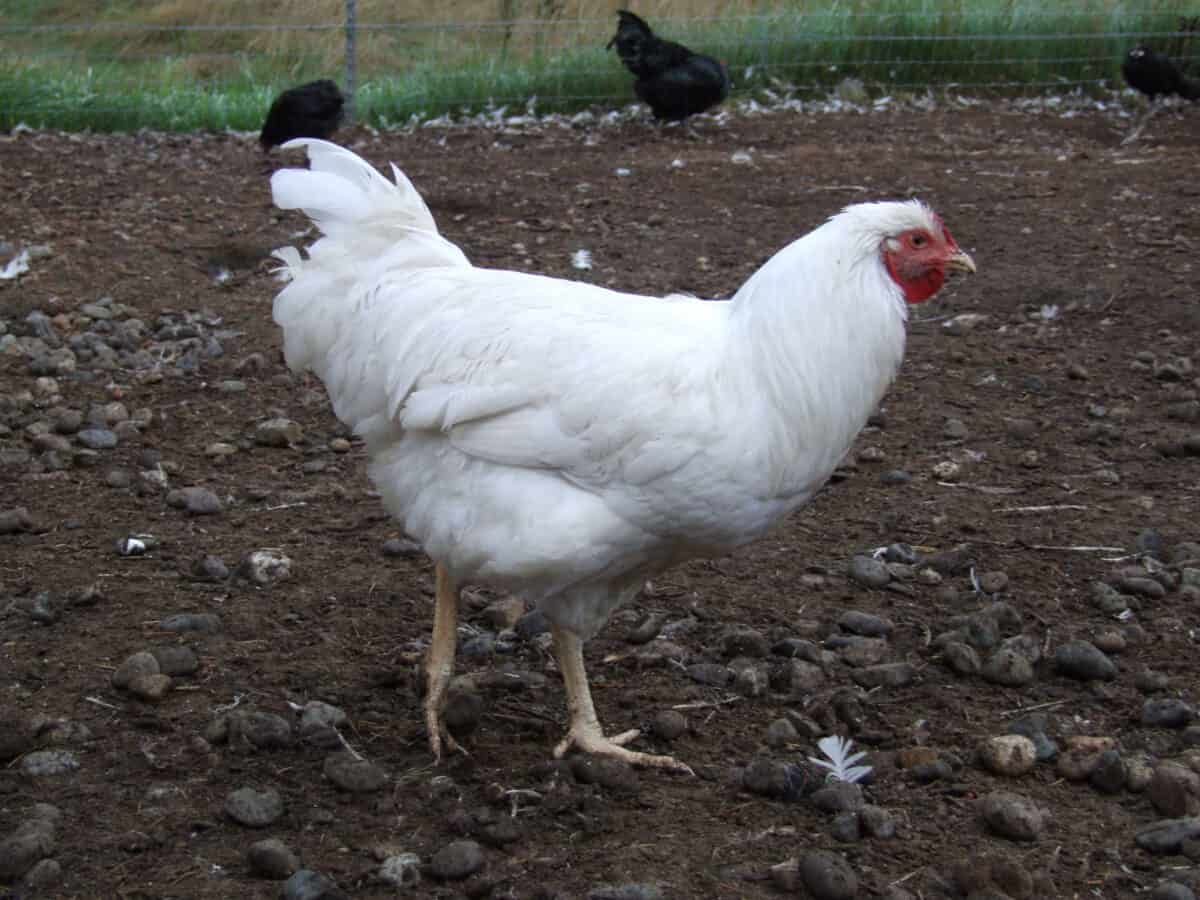
The Rhode Island White is another chicken to get it name from the place it was first bred. This distinctive white bird was the result of cross-breeding between Partridge Cochins, White Wyandottes and Rose Comb White Leghorns.
The result is a bird with an unusual rectangular body shape and deep, full and rounded breast. Its comb and wattles are bright red, and it has a yellow beak, legs and feet. Male birds weigh around 8.5 pounds, whilst females are about 6.5 pounds.
The breed was first developed in 1888, and was fairly popular across the USA. By the 1960s, however, the population was in decline. Today, it’s sadly an endangered breed.
They’re excellent egg layers, however, producing anything from 200 to 250 eggs per year. They lay right through the winter months. And the eggs are very generously sized too. The hens aren’t particularly broody, which keeps up egg production.
Rhode Island Whites are friendly with humans, but can be hard to handle for smaller breeds of chicken. They’ll do well with plenty of space to roam and roost. And if you can allow them to range free, they’ll repay you by being highly effective foragers.
7. Burmese
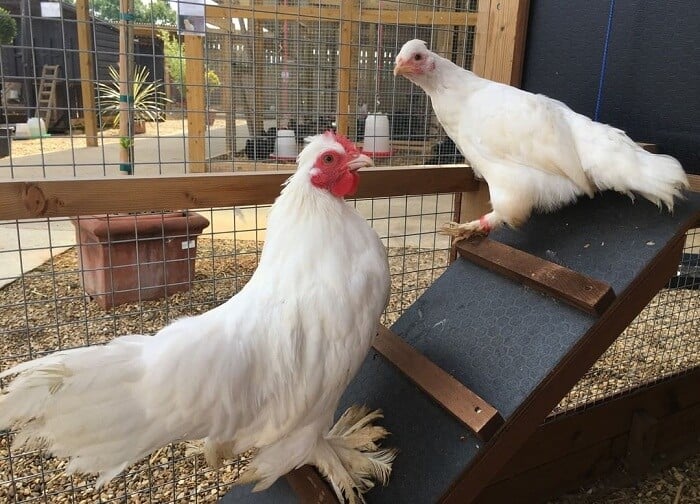
The beautiful Burmese chicken originated in Myanmar, formerly known as Burma, towards the end of the nineteenth century. From there it was taken to Britain, but by the First World War, it was believed to have become extinct.
Fortunately, some surviving Burmese chickens were discovered in the 1970s. These were bred with Booted Bantams, allowing the breed to be resurrected.
Burmese chickens are similar to Booted Bantams, but smaller and shorter. They have smaller crests too, heavy feathering, single combs, small earlobes, long, drooping wattles and bright yellow feet.
In Britain, the breed standard for Burmese chickens requires them to be white, while in the Netherlands they’re black.
The are very friendly chickens, and the hens lay a good number of medium-sized brown eggs. They’re good at incubating them too, and at bringing up their young.
8. Old English Pheasant Fowl
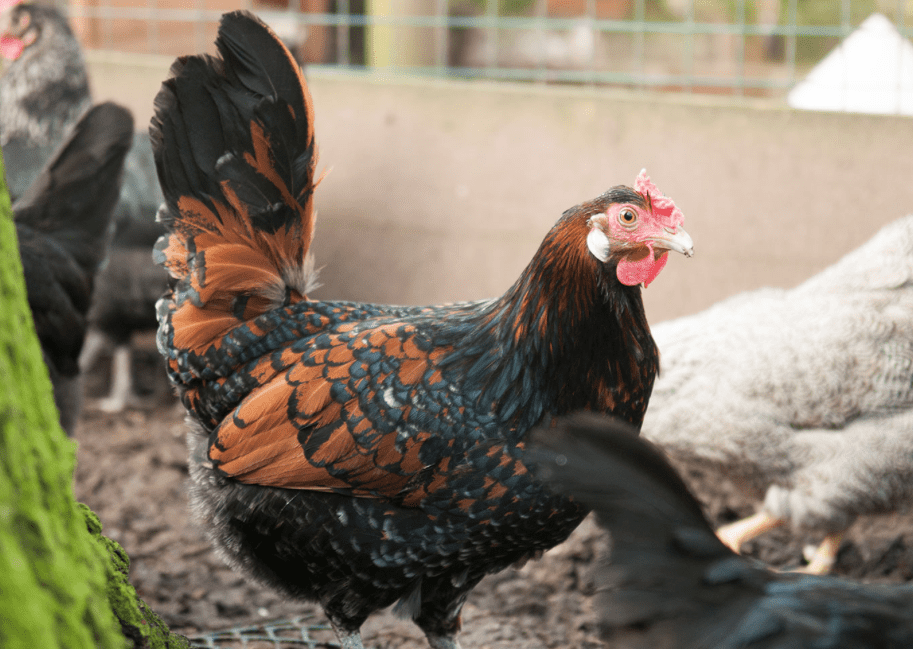
The Old English Pheasant Fowl is a descendent of chickens from the old English counties of Westmorland, Cumberland, Lancashire and Yorkshire. It gets its name from its plumage, which looks a bit like that of wild pheasants.
The breed was popular in the 1950s, but this is another case where numbers sadly declined over the years. Today it’s classified as endangered by the Rare Breeds Survival Trust.
It’s an active and flighty bird, and a keen forager. It needs plenty of space to roam. It can tolerate the cold weather of its native counties, and can live to a ripe old age. It’s also calm and docile by nature, except during the breeding season.
Gold and silver color varieties exist, although it’s rare to find a silver bird. Old English Pheasant Fowls have rose combs, oval white earlobes and slate-gray feet and legs.
The hens can lay anything between 160 and 200 white eggs per year.
9. Onagadori
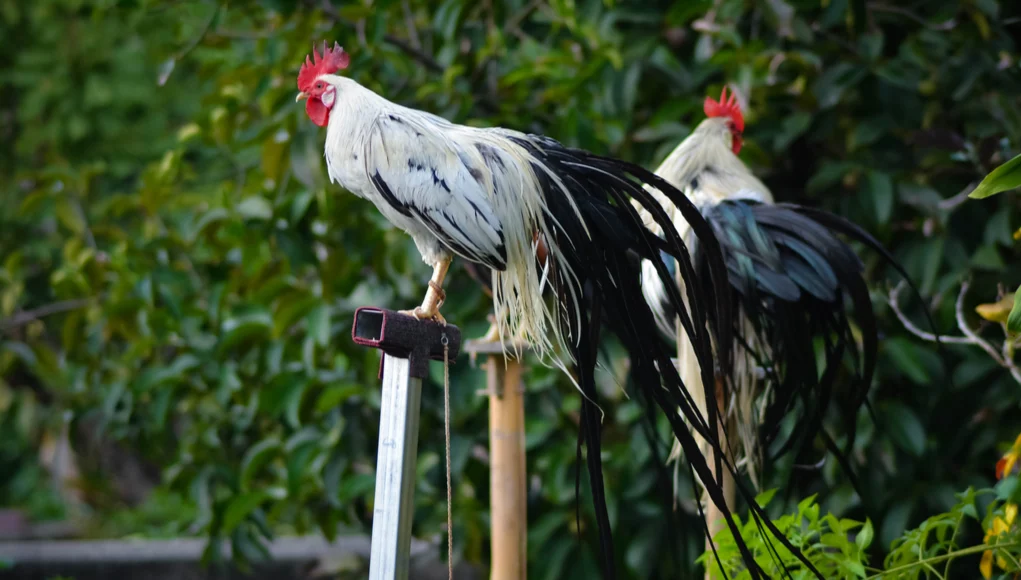
The Onagadori is a Japanese breed, and a forerunner to other breeds including the German Phoenix.
Its roots date back to the 1800s, when it was bred on the Shikoku island of Japan. It’s believed that it was the result of cross breeding between other Japanese chickens, primarily the Shikoku and Totenko breeds.
It’s a very striking bird, with a dramatic tail that’s over five feet long. And some Onagadori have tails far longer than even this – up to 39 feet. It’s perhaps not surprising to learn that this is a chicken that’s kept strictly for ornamental purposes.
In Europe, five different colors are recognised, but in Japan only three are considered acceptable: black-breasted white, white, and black-breasted red. It’s believed that the first Onagadori were black-breasted whites. All colors have a single comb, white earlobes, and red-brown eyes.
The Onagadori is one of seventeen chicken breeds designated a Special National Treasure of Japan. And it’s the only one to be awarded the status of “special”. Today, there are only around 150 Onagadori in Japan, making this a truly rare breed.
10. Sicilian Buttercup
The delightfully named Sicilian Buttercup chicken can trace its ancestors back to the sixteenth century. Similar birds are depicted in European paintings from that period. But it wasn’t until the chickens were introduced from Sicily to the USA that the breed was formally established.
They’re attractive and distinctive birds, with a cup comb that’s unique to this breed. It’s formed from two separate combs that join at the back and front.
You can find Sicilian Buttercups in either silver or gold colors. And to conform to the breed standard, their earlobes should be at least two-thirds red.
There are both bantam and standard chickens. They’ll lay between 50 and 80 small, white eggs per year.
They have a flighty temperament, and are best left to roam free. They’re highly alert to predators, as well as being excellent foragers.
They’ll need shelter to protect their combs from frostbite. And chicken sheds will need to be tall enough to accommodate those combs without harming them.
11. Brussbar
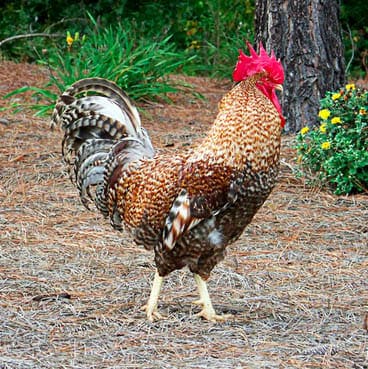
The Brussbar is a hardy backyard hen that today is extremely rare. The breed was developed in Britain in the first half of the twentieth century and was standardized in 1952.
It was never popular with commercial breeders, however. Numbers remained low, and the breed survived the 1960s thanks only to the efforts of a single breeder.
It’s a large, robust bird. The tail, breast and upper legs have gray plumage, while the body has what’s known as “crele” plumage. That’s a mixture of gold and blonde, with barring across all the feathers.
The hens are considered good egg layers. And the young are unusual in that it’s easy to tell males and females apart from the moment they hatch. Male chicks are usually much paler brown than females.
Rare Birds
We hope you’ve enjoyed our look at just some of the rare chicken breeds from around the world.
If you’re considering keeping chickens, choosing a rare breed will enable you to play a part in preserving them for future generations.
Before you make your choice, research what conditions they need to thrive. And if you’re planning to keep more than one breed, make sure they’ll co-exist peacefully. If in doubt, breeding associations can often provide useful advice.

